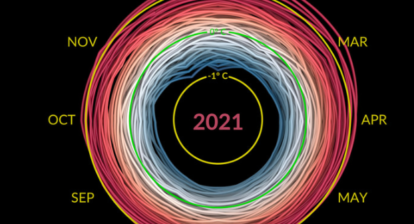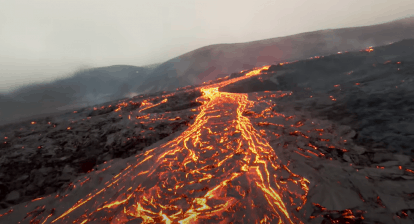Video on new tech that transforms CO2 into rocks
I hope you enjoy the show. You can subscribe to the You Tube Channel for more on science, history and nature. Please do check out the website and follow on social media Twitter // Instagram // Facebook // Reddit // Tiktok and check out the audio podcast on Apple Podcasts // Stitcher // TuneIn // Spotify
Blogpost/Transcript
Climate change is perhaps the most pressing issue currently facing humanity. We are aware of the damage our unplanned and unsustainable use of fossil fuels has wreaked on every aspect of our lives. News articles are replete with new data on climate change impacts and the need to curtail carbon emissions.
(Check out my blog on climate emergency)
This is where the CarbFix project comes in. The revolutionary technology developed as part of this project demonstrates the ability to capture CO2 emissions and turn them into subsurface carbonate minerals (basically into rocks) in less than two years.
This method of “fixing” carbon differs from the others in two significant aspects. Firstly, it provides complete carbon capture and storage at a single operating power plant, and secondly, it petrifies carbon by accelerating the transformation of CO2 into stable minerals (rocks such as calcite). This transformation means the permanent removal of CO2 from the atmosphere because carbonate minerals are stable on geological time-scales.
This technology has been utilized successfully in Reykjavik, Iceland since 2014 at the Hellisheidi Geothermal Power Plant, following successful plot-scale injections in 2012.
Currently, CarbFix activities aim at decreasing capture costs and providing value-addition by co-capturing and injecting other environmentally detrimental gases. Furthermore, research is also ongoing to explore the use of seawater as the gas capture medium, as well as using the CarbFix method for direct air capture.
The process works through two methods:
- Industrial emissions from the Hellisheidi Geothermal Power Plant are captured via a scrubbing tower and injected into nearby basaltic formations at depths greater than 1000 metres. These include both CO2 and H2S emissions and the annual capacity is approximately 12,000 tons of CO2 and 6,000 tons of H2S (one-third and two-third of the power plant’s emissions respectively).
- Pilot scale direct air capture (DAC), which relies on thermal energy (~100 degrees Celsius). This is available as a by-product in many industrial processes. A DAC demonstration unit has been installed by the Hellisheidi Plant, allowing access to a suitable heat source and the CO2 injection infrastructure. This pilot plant commenced operation in October 2017 and is estimated to capture 50 tons of carbon annually.
CO2 from both these processes is injected into the porous basaltic rock near the plant. The movement of the injected gases is monitored closely and preventive steps are followed to minimize the risks of induced seismicity.
Finally, offshore carbon mineralization is being studied, where more storage is available in porous sub-marine basalt. More importantly, this is an environmentally safe solution to the global CO2 challenge because carbonation of subsurface marine basalt is a natural process that occurs in oceans globally.
(Check out my blog on How We Healed the Ozone Layer)
For more information: www.carbfix.com
The selected Optin Cat form doesn't exist.[donate-with-info]







Lynn
Carbonate rocks are a class of sedimentary rocks composed primarily of carbonate minerals. The two major types are limestone, which is composed of calcite or aragonite (different crystal forms of CaCO 3) and dolomite rock, also known as dolostone, which is composed of mineral dolomite (CaMg(CO 3) 2).
Patricia
Basalt is an extrusive igneous rock , which means it has solidified from magma above ground. It is a mafic rock , meaning that it is relatively high in heavier element content, particularly magnesium and iron. Compared to felsic extrusive igneous rocks, like rhyolite, basalt is heavier and darker.